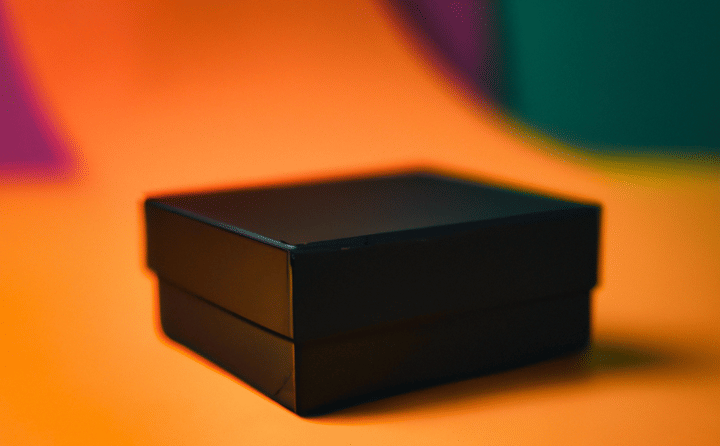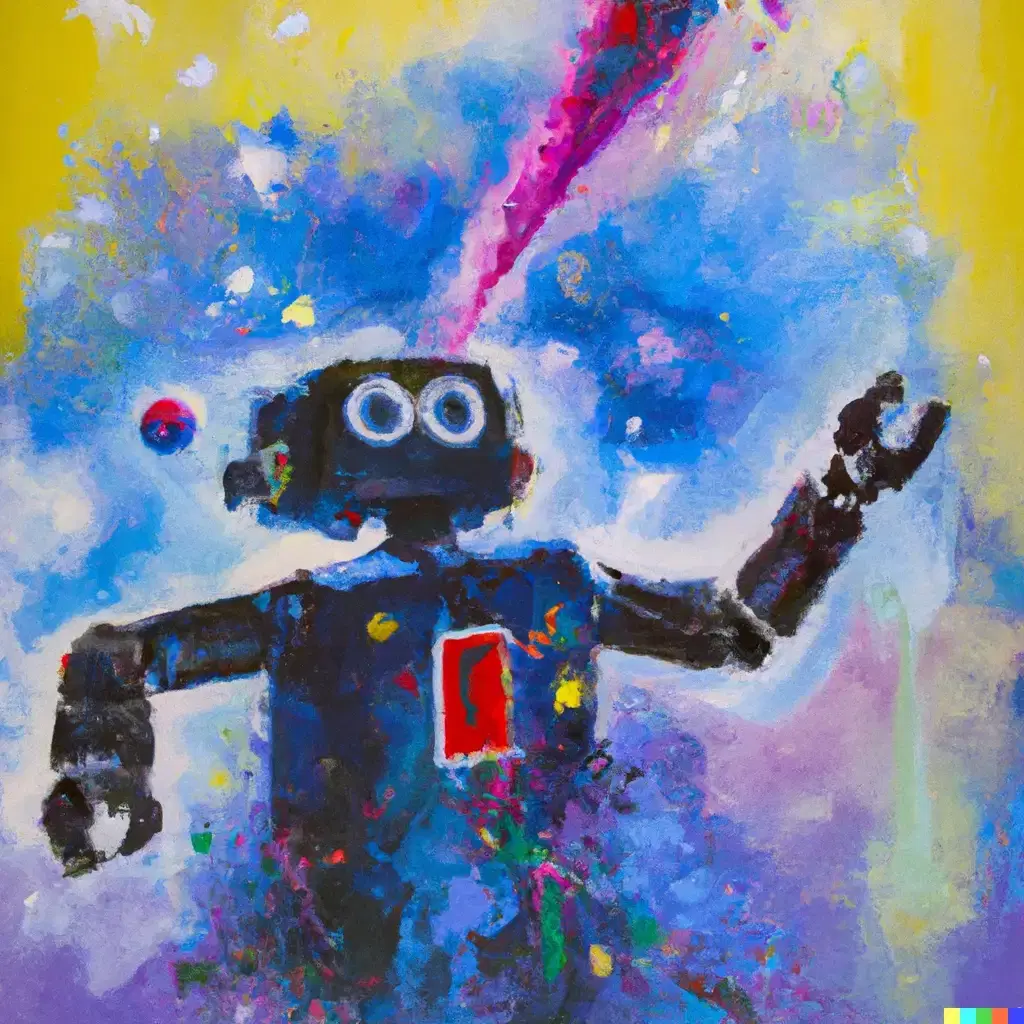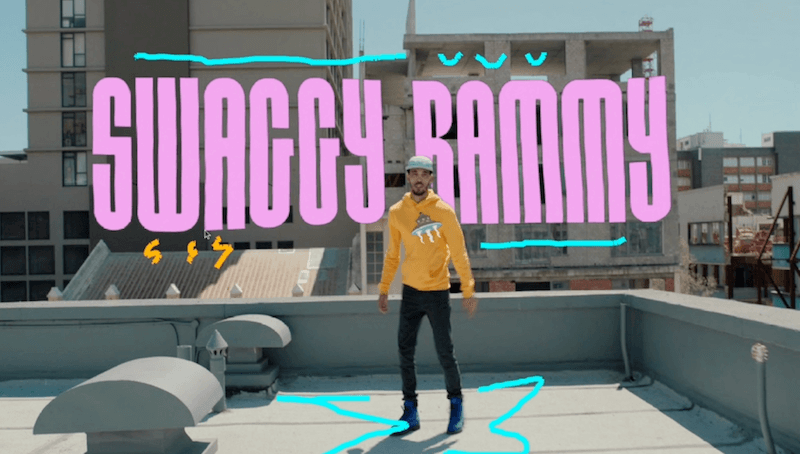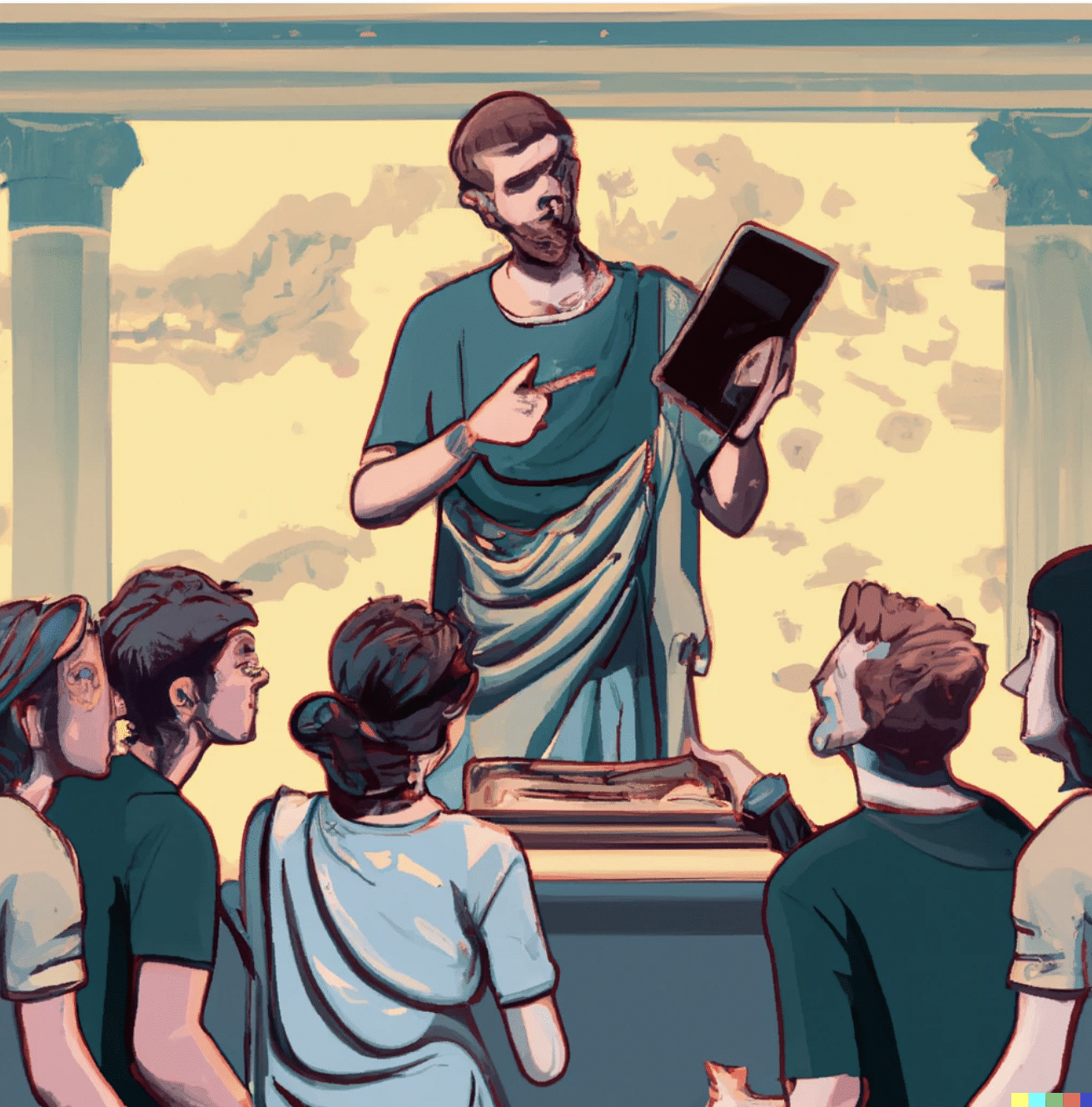Back in 2019, and before the current explosion of AI, one of the first popular 'AI generated stock galleries' to hit the Prototypr Toolbox was 'Generated Faces' by Icons8 – it generates photo-realistic faces that don't actually exist in reality!
Being able to generate the type of face you need on demand was something new - you no longer have to search through limited options and find a closest match from a stock website. Just tweak the filters to change ethnicity, age and other attributes – the AI can create diverse avatars for mockups, prototypes or even landing pages.

This concept of generating an image to fit your needs, rather than having to search through an existing library for a 'best fit', seems a good example of where things have headed today as people look to use AI-generated images as replacement stock photos.
In this post we'll see why some are saying AI could end the stock image industry as we know it, and then list the experimental tools in the space worth exploring, and finish with some consideration towards the ethics of this whole thing.
I found ShutterStock is accepting AI art, not everybody is on board with the AI-generated art, that might change with time Vanessa Shuswap, artist
AI Art's Invasion of Stock Photo Sites
With Dall-E, Midjourney, and Stable Diffusion making AI art so accessible, we've seen a flood of AI generated art on social media - to the point where it's overwhelming people's twitter feeds:
I'd like to see your bad art, your not the most perfect craft, your bad day sketches, anything rather than soulless AI generated piece of image.
— マイケル🀄️ (@mikaelji) October 8, 2022
Inevitably, a lot of AI art has even made its way onto popular stock photo sites such as Adobe Stock, Shutterstock, and iStock.
Despite it being a rule violation to sell AI art, according to PetaPixel, you can still find plenty for sale:
A Shutterstock search for “AI-Generated” returns 18,850 results, many of which (not all) are clearly AI generated art
iStock returns 1,585 results for the term "AI-Generated"
As Janus Rose highlights on Vice, you can easily spot an AI tool's (e.g. Midjourney's) 'unmistakable aesthetic' amongst regular stock photos. A lot of the time, facial features are creepy, hands can be weird, and there's often a surrealist feel with unusual elements combined:

It's unclear what the rules for stock platforms are, but if you take a closer look, some AI generated art is also marked as trending:

PetaPixel went on to report that Getty Images and Shutterstock are removing AI-generated submissions on their platforms, but it surely won't halt things.
There seems to be no stopping the technology, as dedicated AI art platforms and marketplaces seem to be sprouting every week, making AI Stock Marketplaces a thing. Below you'll find some of those:

Letter
AI Generators
Here's some early marketplaces and platforms that are built upon Dall-E, Midjourney, Stable Diffusion (or other models) to make it easier for people to access and create AI generated art:
StockAI
Like Generated Faces, with StockAI, images are created on demand, so you don't have to search for something to fit your needs like with a regular stock image marketplace. As it improves, that reduces one of the main pains of stock image websites - you can end up scrolling them for hours for the right image and style.

Unlike regular stock image sites though, the entire library is created by a single entity, whereas a typical stock image marketplace provides a platform for thousands of artists to sell their art.
GhostlyStock
This is an appropriately named AI generator that creates images from text to in the style of stock photos:

Jasper Art
Similar to StockAI - provide a prompt, and generate an image. Jasper's target market is bloggers and creators who need stock photos for their articles and social media posts. For smaller companies and indie creators, it makes images more affordable, where they'd otherwise use some free alternative such as Unsplash:

The next few tools focus less on being stock image generators, but are often used for the same purpose:
PromptHero
This is a platform that indexes images and created with AI generators such as Dall-E, Midjourney, and Stable Diffusion. They make the prompts used to create the images searchable, so you can learn how images are generated in different styles:

SuperMachine
Text to image AI generator using Stable Diffusion:

Pinegraph
"Bring your imaginations to life with the power of the Pinecasso AI. Just describe what you want, and Pinecasso will do the rest."

Nolibox Creator
An open source project that integrates AI (e.g. Stable Diffusion):

Picreator
Another generator based on text prompts.
If you're looking for more AI Image generators and a bit more background on those tools, check out Edward Chechique's list the Prototypr Medium publication.
Uncanny Valley
Overall, the on-demand AI generated photos for stock photos get mixed reviews, and it still seems to be early and experimental:
According to Stock AI founder Danny Postma, 20,000 people used StockAI as of September 30. However, of those, only 16 paid for AI material. - The Decoder
Unlike Icons8's Generated Faces project, Dall-E and the rest create eerie looking faces:

The results are quite appalling and I look forward to you seeing more of it. - Boingboing.net
Who owns it?
Personally, having tried Dall-E 2's outpainting to extend my own drawing, I found it weird when the AI started moving away from my original style. The further from the central original image, the more inspiration Dall-E was taking from what it's learned from other people's art.
At that point, I wondered how much of it is actually mine. Have a look at the following video, and you'll see how it changes:
Dall-e outpainting from my weird old drawing 🤖🧐 good night pic.twitter.com/XgjKdAP6WY
— graeme (@graeme_fulton) October 10, 2022
Starting with your own work
I think AI as a tool to enhance your own work, or create a library from your own photos might solve a few of the many ownership issues. It seems odd to me that you can create an entire stock image library and sell images with no input other than text prompts. And even those text prompts can be generated programatically.
Starting with your own work as an input, and others who have opted in might be a fairer way to create an AI stock image market where creators can be credited for anything made with their likeness. Circling back to the start of this article, Generated Photos face generator is a good example of this - their photos come from model-released images that they captured in their studio:

However, for publicly available AI models such as Dall-E/Midjourney, it's probably a lot more complicated to make this possible! What do you think?


 Buy me a coffee
Buy me a coffee



